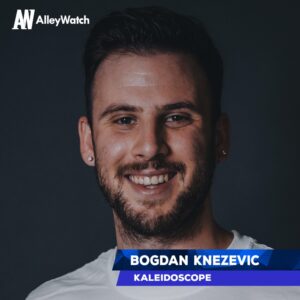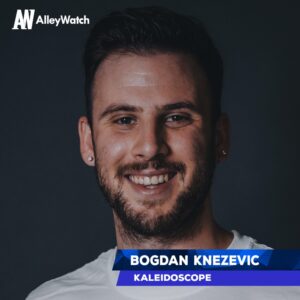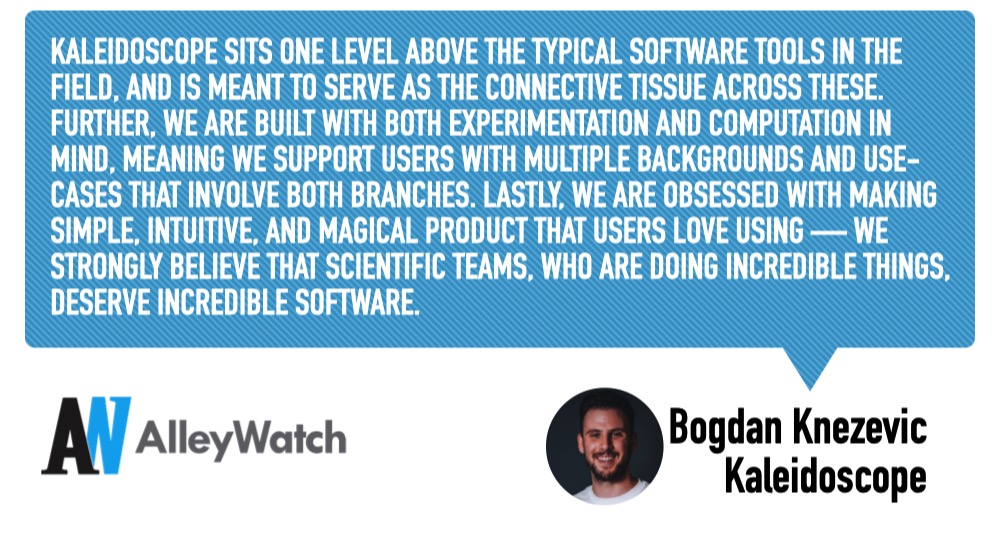Scientific research has traditionally been done in siloes with efforts between clinicians, engineers, and scientists disparate and sometimes by design. However, we are moving towards a future where there is more opportunity for collaboration among different disciplines. Kaleidoscope is a software platform built by scientists to effectively manage collaboration across different teams. The amount of data has exponentially increased in scientific research and the platform effectively manages, organizes, and tracks data across a project whether at the wet lab or with a computational team. Kaleidoscope also seamlessly integrates with other software platforms, eliminating any friction or barriers to building a modern approach to scientific research that’s also scalable. The company is currently in private beta.
AlleyWatch caught up with Kaleidoscope CEO and Cofounder Bogdan Knezevic to learn more about the business, the company’s strategic plans, recent round of funding, and much, much more…
Who were your investors and how much did you raise?
We raised a $6M Seed round, which was co-led by Hummingbird Ventures and Dimension, with participation from Caffeinated Capital, SV Angel, Hawktail, Gunderson, and a number of angel investors.
Tell us about the product or service that Kaleidoscope offers.
Kaleidoscope is a software platform that helps scientific teams organize, manage, and track experiments. By using Kaleidoscope, companies can connect the rest of their software tools and centralize knowledge (making collaboration across teams easier), as well as systematically track scientific decision making. Our goal is to make science more collaborative, reproducible, and scalable.
 What inspired the start of Kaleidoscope?
What inspired the start of Kaleidoscope?
Prior to starting Kaleidoscope, I spent time as a scientist in a number of contexts, and was always frustrated by how much time I was wasting doing things unrelated to the science (like tracking down data or project information). Ahmed, David, and I really wanted to find the right problem to solve — one that we thought would make the biggest difference to the field and that we could see ourselves working on for 10+ years. After spending the first few months talking to hundreds of people and teams working in life sciences, we realized that there was a real unmet need for what we are now working on, which was causing companies tens or hundreds of millions of dollars and countless wasted opportunities.
How is Kaleidoscope different?
Kaleidoscope sits one level above the typical software tools in the field, and is meant to serve as the connective tissue across these. Further, we are built with both experimentation and computation in mind, meaning we support users with multiple backgrounds and use cases that involve both branches. Lastly, we are obsessed with making simple, intuitive, and magical product that users love using — we strongly believe that scientific teams, who are doing incredible things, deserve incredible software.
What market does Kaleidoscope target and how big is it?
We are starting with the life sciences market, with an initial focus on biotech and pharma (there are tens of thousands of these). However, our product abstracts to R&D more broadly, and our long-term aim is to be the software that all R&D teams in the world are using.
What’s your business model?
We are a Software as a Service company, so our customers (typically companies or teams at companies) pay for a subscription to the platform.
How are you preparing for a potential economic slowdown?
Part of the reason why we raised how much we did was to have the space to focus on building the best product that solves the problem and that users love using, without worrying about the market and having to raise again in several months.
What was the funding process like?
It was intense, but I think we did a great job at running a focused, tight process. We did not want fundraising to take up a lot of time over many months, and instead made sure that we had a clear story to tell with clear goals in mind, and that we were speaking with investors who understood the field. It was a bi-directional learning process: investors learned about us, but we also used the time to learn about them, because partnering with the right investors is key. Ultimately, we wanted to work with people who believed in us as a team, who were in it for the long haul, and who shared the same long-term vision we had.
What are the biggest challenges that you faced while raising capital?
Finding the right investors is not as simple as it might seem. Sometimes, it would take a few conversations before we realized someone was or wasn’t a good fit for what we were doing. It was important to us that we get to this point of understanding as efficiently as possible, so that we could go back to building the product.
What factors about your business led your investors to write the check?
I think it was primarily two things: (1) us as a team and (2) the emerging opportunities in the space. As founders, Ahmed, David, and I have uniquely suited backgrounds for building Kaleidoscope. I already mentioned that I was a scientist (my Ph.D. was in multi-omics and drug discovery); Ahmed is a phenomenal software engineer with experience as a Founding Engineer building multiple products from the ground up, and David is an incredible Product and Design leader, having worked in contexts spanning from the first employee at a startup that was acquired by Google, all the way through to working at Google Health. That, coupled with the fact that there is a big gap between the software that exists today vs how research teams are working and how work is evolving.
I think it was primarily two things: (1) us as a team and (2) the emerging opportunities in the space. As founders, Ahmed, David, and I have uniquely suited backgrounds for building Kaleidoscope. I already mentioned that I was a scientist (my Ph.D. was in multi-omics and drug discovery); Ahmed is a phenomenal software engineer with experience as a Founding Engineer building multiple products from the ground up, and David is an incredible Product and Design leader, having worked in contexts spanning from the first employee at a startup that was acquired by Google, all the way through to working at Google Health. That, coupled with the fact that there is a big gap between the software that exists today vs how research teams are working and how work is evolving.
What are the milestones you plan to achieve in the next six months?
We want to find the right set of early customers/partners to support and also iterate on product with, and we want to hire the right early team that will allow us to do so while continuing to push the limits of what the product can do.
What advice can you offer companies in New York that do not have a fresh injection of capital in the bank?
It’s a tough question because it can be a very stressful, high-pressure situation. I’d maybe say to look inward and focus on doing what is core to the business — what the business does best and what serves an otherwise unmet need.
Where do you see the company going now over the near term?
I think it’s really important for us to spend the near term refining our understanding of how we provide the strongest, differentiated value to our customers. We’re going to be focused on learning from the right set of early customers who we can support from Day 1 but who are also aligned with our long-term vision.
What’s your favorite outdoor dining restaurant in NYC?
I like the patio at Jeffrey’s Grocery, and I also recently discovered Rule of Thirds (in Greenpoint) which has a really cool outdoor space as well.





